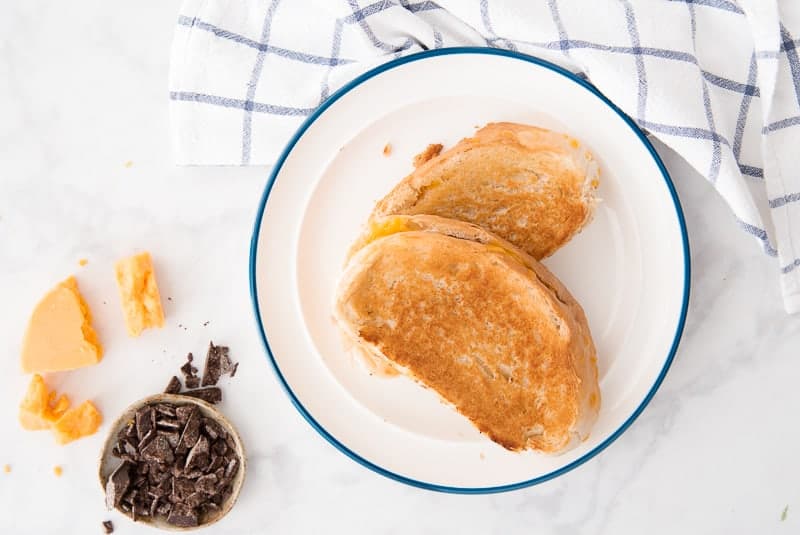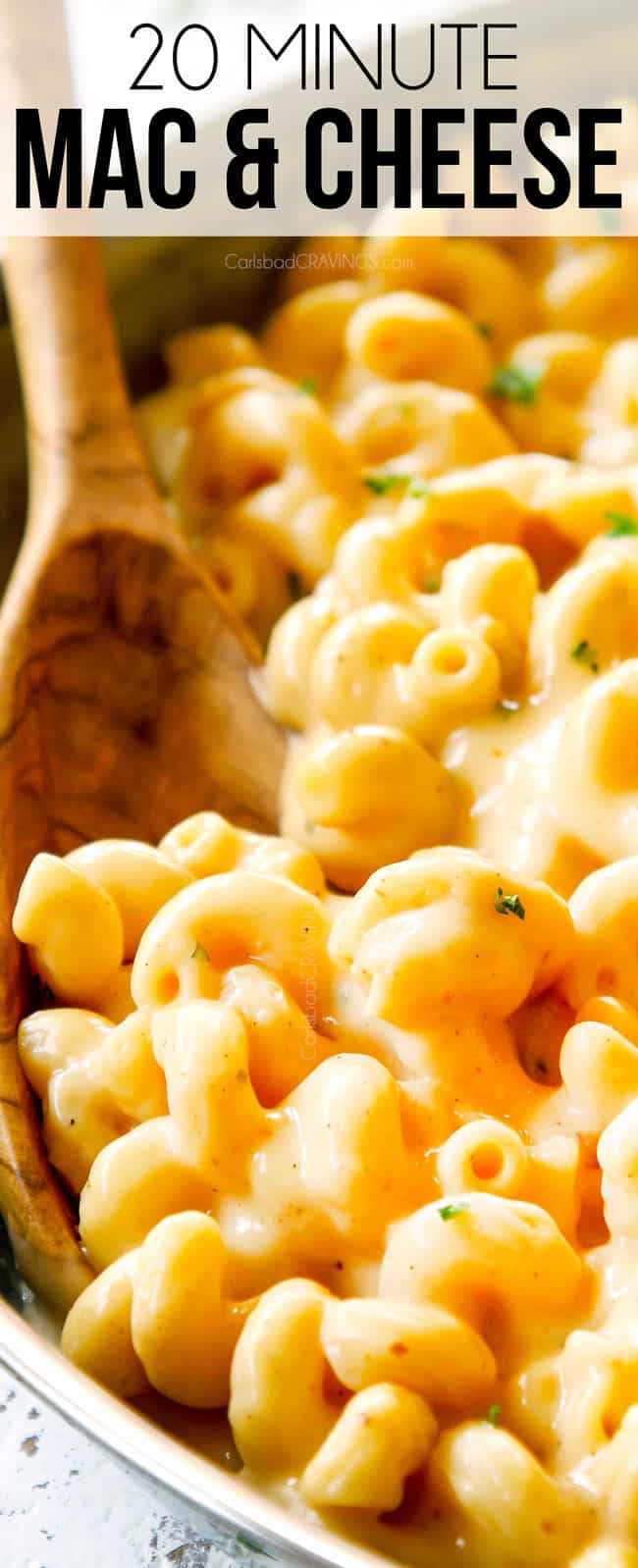- What Is The Maximum Hot Holding Temperature Requirement For Macaroni And Cheese
- What Is The Minimum Hot Holding Temperature For Macaroni And Cheese
4# Pasta(cooked)
1# Velveeta
1# Colby
1# Monterray Jack
2 c Hvy cream
48oz Evap Milk(4/12oz cans)
1 c Sour cream
1 t K. salt
1 t Black pepper
2 t sugar
We take all ingridients and mix them well then place in a third pan. Cover it with film and foil to bake at 350 for 45 minutes. When it comes out you just stir it to fully incorporate it. It's delicious and simple. The problem is that while hot holding it over thickens. Its still delicious just isn't gooey.
I think using milk instead of heavy cream. Maybe replace a can if evaporated milk with pasta water.
Any help is greatly appreciated!
Plan a “bacteria-free buffet” with these easy tips for food safety when entertaining. Bon appétit!
Precooked foods such as hotdogs must be first re-heated to 165 degrees F and then held above 140 degrees F until served. Wash the cart every day before and after use. Beside above, what temperature should pasta be held at?
Entertaining is one of the mainstays of the holiday season — and helps commemorate milestone events throughout the year, too. With proper preparation, you can be creative and tempt your party guests with an array of fun platters while still keeping food safety in mind!
- Inside the hot holding pot located below the microwave and at the steam table located at the kitchen island: Ready to eat mac n cheese: 158F Cooked inside the oven and ready to eat: Ready to eat mac n cheese: 167-168F.Preparation of suspect food(s): Per cook, macaroni and cheese is prepared from ingredients stored inside the walk-in cooler.
- Food Item: Temperature (F) Temperature (C) Rest Time. Steaks and Roasts (Beef, veal, lamb and pork) Includes fresh, uncooked ham.
Print & Share (PDF 325KB)Spanish (Español)

Size Matters
If you’re planning a buffet at home and are not sure how quickly the food will be eaten, keep buffet serving portions small.
- Prepare a number of small platters and dishes ahead of time, and replace the serving dishes with the fresh ones throughout the party.
- Store cold back-up dishes in the refrigerator and keep hot dishes in the oven set at 200 °F to 250 °F prior to serving. This way, your late arriving guests can safely enjoy the same appetizing arrangements as the early arrivals.
Take Temperatures
Hot foods should be kept at an internal temperature of 140 °F or warmer.
- Use a food thermometer to check. Serve or keep food hot in chafing dishes, slow cookers, and warming trays.
- Be aware that some warmers only hold food at 110 °F to 120 °F, so check the product label to make sure your warmer has the capability to hold foods at 140 °F or warmer. This is the temperature that’s required to keep bacteria at bay!
- Eggs and egg dishes, such as quiches or soufflés, may be refrigerated for serving later but should be thoroughly reheated to 165 °F before serving.
Chill Out
Cold foods should be kept at 40 °F or colder.
- Keep cold foods refrigerated until serving time.
- If food is going to stay out on the buffet table longer than 2 hours, place plates of cold food on ice to retain the chill.
Keep It Fresh
Don’t add new food to an already filled serving dish.
- Instead, replace nearly empty serving dishes with freshly filled ones.
- Be aware that during the party, bacteria from people’s hands can contaminate the food. Plus, bacteria can multiply at room temperature.
Watch the Clock
Remember the 2-Hour Rule: Discard any perishables left out at room temperature for more than 2 hours, unless you’re keeping it hot or cold.
- If the buffet is held in a place where the temperature is above 90 °F, the safe holding time is reduced to 1 hour.
- Watch the clock with leftovers, too! Whether you’re sending “doggie bags” home with guests or are saving them for yourself, leftovers should be refrigerated as soon as guests arrive home and/or within 2 hours!
Adapt “Old Family Recipes” Safely

Some of your favorite traditional recipes may call for raw or lightly cooked eggs. These may include homemade Caesar salad dressing, ice cream, custards, rice pudding, chocolate mousse, eggnog, and some sauces.
However, some raw eggs can contain harmful bacteria. These can be particularly dangerous when consumed by those at higher risk for foodborne illness – such as pregnant women, young children, older adults, and those who may have a weakened immune system because of organ transplants or diseases like diabetes, cancer, or HIV/AIDS.
Help keep your party guests safe by adapting your favorite egg containing recipes (or substituting prepared products for some items). Here’s how:
- Add the eggs to the amount of liquid called for in the recipe, then heat the mixture until it reaches 160 °F on a food thermometer.
OR
- Use store-bought products of the foods listed above, which are often already cooked or pasteurized. (Check the label to be sure.)
OR
- Purchase pasteurized eggs. These eggs can be found in some supermarkets and are labeled “pasteurized.” Here are several types consumers can buy:
- Fresh, pasteurized eggs in the shell (found in the refrigerator section).
- Liquid, pasteurized egg products (found in the refrigerator section).
- Frozen, pasteurized egg products (found in the frozen food section).
- Powdered egg whites (found in the baking section).
Safe Food Handling: Four Simple Steps
CLEAN
Wash hands and surfaces often
- Wash your hands with warm water and soap for at least 20 seconds before and after handling food and after using the bathroom, changing diapers, and handling pets.
- Wash your cutting boards, dishes, utensils, and counter tops with hot soapy water after preparing each food item.
- Consider using paper towels to clean up kitchen surfaces. If you use cloth towels, launder them often in the hot cycle.
- Rinse fresh fruits and vegetables under running tap water, including those with skins and rinds that are not eaten. Scrub firm produce with a clean produce brush.
- With canned goods, remember to clean lids before opening.
SEPARATE
Separate raw meats from other foods
- Separate raw meat, poultry, seafood, and eggs from other foods in your grocery shopping cart, grocery bags, and refrigerator.
- Use one cutting board for fresh produce and a separate one for raw meat, poultry, and seafood.
- Never place cooked food on a plate that previously held raw meat, poultry, seafood, or eggs unless the plate has been washed in hot, soapy water.
- Don’t reuse marinades used on raw foods unless you bring them to a boil first.
COOK
What Is The Maximum Hot Holding Temperature Requirement For Macaroni And Cheese
Cook to the right temperature
- Color and texture are unreliable indicators of safety. Using a food thermometer is the only way to ensure the safety of meat, poultry, seafood, and egg products for all cooking methods. These foods must be cooked to a safe minimum internal temperature to destroy any harmful bacteria.
- Cook eggs until the yolk and white are firm. Only use recipes in which eggs are cooked or heated thoroughly.
- When cooking in a microwave oven, cover food, stir, and rotate for even cooking. If there is no turntable, rotate the dish by hand once or twice during cooking. Always allow standing time, which completes the cooking, before checking the internal temperature with a food thermometer.
- Bring sauces, soups and gravy to a boil when reheating.
CHILL
Refrigerate foods promptly
What Is The Minimum Hot Holding Temperature For Macaroni And Cheese
- Use an appliance thermometer to be sure the temperature is consistently 40° F or below and the freezer temperature is 0° F or below.
- Refrigerate or freeze meat, poultry, eggs, seafood, and other perishables within 2 hours of cooking or purchasing. Refrigerate within 1 hour if the temperature outside is above 90° F.
- Never thaw food at room temperature, such as on the counter top. There are three safe ways to defrost food: in the refrigerator, in cold water, and in the microwave. Food thawed in cold water or in the microwave should be cooked immediately.
- Always marinate food in the refrigerator.
- Divide large amounts of leftovers into shallow containers for quicker cooling in the refrigerator.